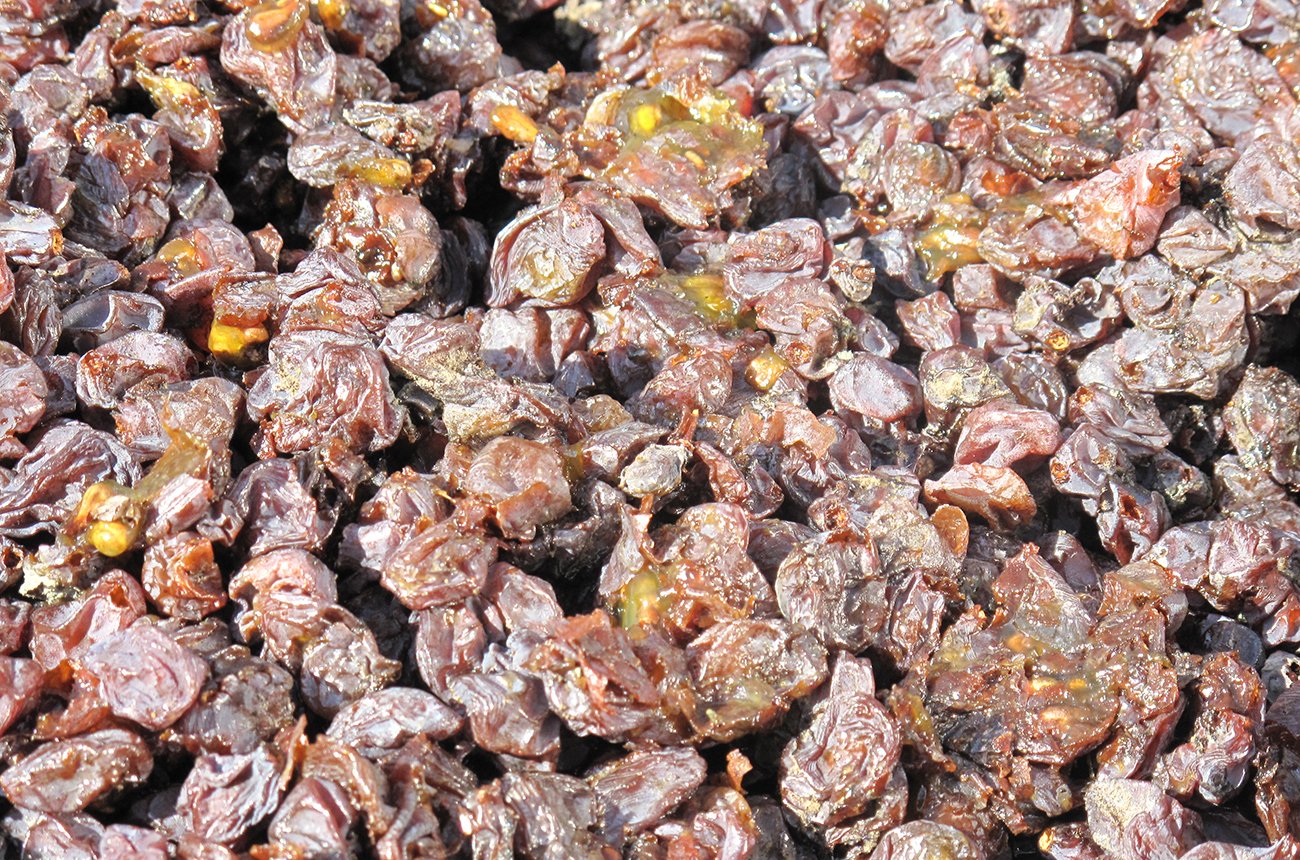Hungary > About Tokaj Aszu
What is Tokaji Aszu?
Tokaji Aszu is the name for the sweet, intense dessert wines of the Tokaj region in northeastern Hungary, made with a portion grapes shrivelled to raisins.
The primary grape used for these wines is the Furmint variety, which is susceptible, in certain years, to the Botrytis cinerea fungus- otherwise known as Noble Rot. It is the same fungus that, on Semillon and in Bordeaux known as pourriture noble, creates the great dessert wines of Sauternes; and in the Mosel and Rhine on Riesling where it is known as edelfaule, creates the famed trockenbeerenauslese wines of the region.
Botrytis penetrates the skins of the grapes, allowing water to evaporate and turning the grapes to raisins, at the same time imparting a unique honeyed mushroomy flavor to the fruit.
Aszu grapes: Credit: Caroline Gilby MW
Aszu is the Hungarian word for these shrivelled, raisiny grapes.
The aszu method
To make an Aszu, first of course you need the right conditions, producing a tiny crop of raisins.
Second, the grapes are harvested. The vineyard will likely have a mix of aszu and normally-ripe grapes. If the clusters of mixed raisins and grapes are harvested whole, the result is a lightly sweet wine called a Tokaj Szamorodni. The aszu grapes are harvested separately into 25-liter wooden tubs, called puttonyos. Each puttony is pressed and the tiny amount of juice is then added to a cask of “base wine” from normally-harvested grapes. The top grades (and as of 2013 all Aszu wines, are required to use the must from 5-6 puttonyos per cask of wine.
These wines are richly sweet, with the minimum residual sugar in a 5-puttony wine set at 120 g/l, and the minimum for a 6-puttony wine at 15og/l. In practice, some are much higher.
The current minimum ageing period for Tokaji Szamorodni is 12 months, with at least 6 months in barrel. For Aszú it is two years in total, with at least 18 months in barrel. A regular late-harvest Tokaj hs no oak requirement.
The incredibly rare Tokaji Essencia, made from the syrupy free-run juice that trickles from pressed Aszú berries, usually contains more than 450g/L of residual sugar and is fermented in glass demijohns. It is traditionally nally served by the spoonful rather than by the glass.
Matching Tokaji Aszú with food
Tokaj Szamorodni and 5-puttony Tokaj are mostly about the interplay between sweetness and refreshing crispness, which means they are well-matched to pâté and light cheeses. Fruit-based desserts like apple crumble, poached pears or fruit tart go well with this style too.
Six Puttonyos Tokaji is more about gorgeously luscious sweetness, although acidity still comes into play so that the best wines are never cloying. Try matching these wines with full-flavoured blue cheeses or varying types of paté.
More ambitious chefs might try Asian-spiced savoury dishes: Peking duck with plum sauce, caramelized pork, sticky sesame tofu, or Thai red curry with pumpkin.




